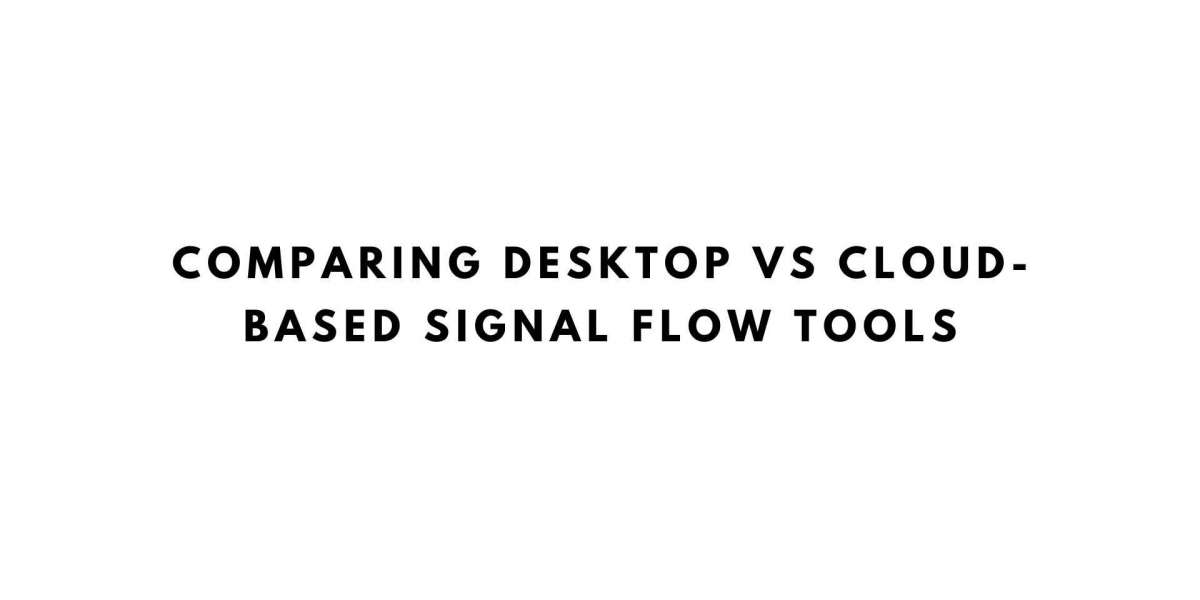In the fast-paced world of AV design, the ability to create accurate and professional signal flow diagrams is critical. These diagrams provide a clear picture of how audio, video, and control signals are routed from source to destination, helping teams avoid confusion and costly mistakes during installation. Choosing the right signal flow tool can make a significant difference in the efficiency, accuracy, and scalability of a project.
One major consideration is whether to use desktop-based software or cloud-based platforms for diagramming. With solutions like XTEN-AV leading the charge in cloud-based innovation, many AV professionals are now reevaluating their traditional desktop tools.
This blog will explore the pros and cons of desktop versus cloud-based signal flow tools, helping you decide which approach is right for your workflow. Whether you are designing a small huddle room or a complex multi-zone venue, the right signal flow diagram software can streamline your design and delivery process.
What Are Desktop Signal Flow Tools
Desktop signal flow tools are software applications installed directly on a user’s computer. These tools often work offline, storing project files locally or on a company server. Examples include traditional CAD platforms and drawing tools that offer AV symbol libraries.
What Are Cloud-Based Signal Flow Tools
Cloud-based tools like XTEN-AV operate entirely through a web browser. Projects are stored in the cloud, enabling access from anywhere. These tools support real-time collaboration, automation, and integration with broader AV workflows.
Now let us compare both approaches across key features that matter most to AV professionals.
1. Accessibility and Flexibility
Desktop Tools: These tools require installation and are often licensed per device. Users must be on the computer where the software is installed, which limits access when working remotely or from multiple locations.
Cloud-Based Tools: Platforms like XTEN-AV offer anytime, anywhere access through a browser. Whether you are in the office, on-site, or working from home, you can log in and work on your project without needing special installations.
Advantage: Cloud-based signal flow diagram software provides unmatched flexibility for today’s hybrid work environments.
2. Collaboration and Teamwork
Desktop Tools: Collaboration is limited. Team members usually pass around files through email or shared drives, which can lead to version control issues and delays.
Cloud-Based Tools: XTEN-AV supports real-time collaboration. Multiple users can work on the same diagram simultaneously, leave comments, and view changes instantly. This promotes teamwork and reduces communication gaps.
Advantage: Cloud-based tools are ideal for AV teams that need to stay connected across departments or locations.
3. Software Updates and Maintenance
Desktop Tools: Updates must be downloaded and installed manually, often requiring IT support. Older versions may be incompatible with new operating systems or project files.
Cloud-Based Tools: Updates are automatic and seamless. Users always access the latest features and fixes without lifting a finger.
Advantage: Cloud-based platforms ensure that your signal flow diagram software is always up to date.
4. Integration with AV Workflows
Desktop Tools: These tools often work in isolation. Designers must manually transfer data between drawing tools, BOM creators, and documentation platforms. This increases the chance of errors and duplication.
Cloud-Based Tools: XTEN-AV connects signal flow diagrams with real-time product databases, bills of materials, CAD drawings, and project documentation. Changes made in the diagram automatically update throughout the project.
Advantage: Cloud tools support integrated, end-to-end AV workflows that save time and increase accuracy.
5. Performance and File Management
Desktop Tools: These can handle large projects efficiently on powerful machines. However, they rely on the user’s local hardware, which may vary in performance. Files are often stored on local drives, making backups and sharing more complex.
Cloud-Based Tools: While performance depends on internet connection speed, platforms like XTEN-AV are optimized for cloud usage. Files are automatically saved and backed up in the cloud, eliminating risk of data loss.
Advantage: For most users, cloud platforms offer sufficient performance with better file management and security.
6. Cost and Licensing
Desktop Tools: Often sold as perpetual licenses with optional paid upgrades. Initial costs may be high, and adding users requires additional licenses.
Cloud-Based Tools: Typically available as subscription-based services. XTEN-AV offers flexible pricing based on users or usage, making it easier to scale with your team.
Advantage: Cloud-based pricing models offer greater scalability and lower upfront investment.
7. Mobile and On-Site Access
Desktop Tools: Access is limited to the machine the software is installed on. Field technicians cannot easily view or update diagrams on-site.
Cloud-Based Tools: XTEN-AV works on tablets and mobile devices, giving installers and technicians real-time access to diagrams, changes, and notes in the field.
Advantage: Cloud access enhances on-site efficiency and minimizes installation errors.
8. Automation and Smart Features
Desktop Tools: Most desktop tools offer basic drawing features but lack intelligent automation. Users manually connect signals and ensure compatibility.
Cloud-Based Tools: XTEN-AV includes smart features like auto-routing, device compatibility checks, and signal validation. The software reduces human error and accelerates design time.
Advantage: Cloud-based platforms lead in innovation and intelligent design support.
Which One Should You Choose
If your AV projects require frequent collaboration, real-time updates, mobile access, and integrated documentation, a cloud-based solution like XTEN-AV is the best choice. It is built for modern workflows and can scale with your business.
However, if you work in a fixed environment with limited internet access and do not need collaborative features, a desktop tool might still suit your needs.
That said, the AV industry is quickly moving toward cloud-based platforms. The need for flexibility, collaboration, and automation is becoming standard, not optional.
Conclusion
When comparing desktop vs cloud-based signal flow tools, it becomes clear that cloud platforms offer significant advantages for modern AV professionals. XTEN-AV is designed to meet these needs by delivering advanced functionality, smart automation, and seamless collaboration—all in a browser-based environment.
Signal flow diagram software is no longer just about drawing lines. It is about building intelligent, connected, and future-ready AV systems. As projects grow more complex and teams work more flexibly, choosing the right platform is essential.
For those looking to design smarter, collaborate better, and deliver projects with speed and accuracy, XTEN-AV and its cloud-based signal flow tools are the clear solution.
Read more: https://www.florevit.com/read-blog/40450







